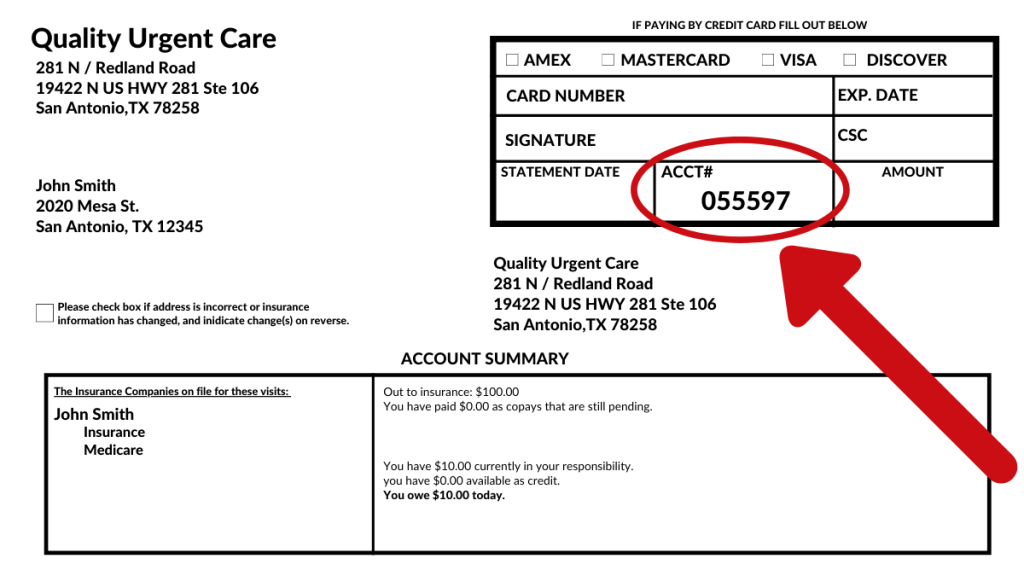Urgent care clinics provide convenient, affordable medical care when you need it fast. But you probably still have questions about how billing and payment works after your urgent care visit. This guide breaks down everything you need to know about paying your urgent care bill.
Overview of Urgent Care Billing Process
Urgent care clinics aim to make medical billing as straightforward as possible Here’s a quick overview of what to expect
-
Provide insurance information when you check-in or register as a new patient
-
Pay any copay or urgent care visit fee at the time of your appointment.
-
The clinic submits a claim to your health insurance provider
-
You receive an explanation of benefits (EOB) from insurance explaining coverage.
-
The clinic bills you for any remaining balance like coinsurance or deductible.
-
You pay the bill via the clinic’s online portal, phone, mail or in person.
What to Bring to Your Urgent Care Visit
Be prepared to pay for your urgent care visit by bringing:
-
Insurance card – For insurance billing.
-
Photo ID – To confirm identity and birthdate.
-
Copay – Call ahead or check card to get amount.
-
Payment method – Credit/debit card, HSA card, cash.
Having this information handy facilitates payment and billing.
Urgent Care Payment and Billing Options
Urgent care clinics offer several convenient payment and billing options:
-
Pay at check-in – Settle copay or urgent care fee upfront.
-
Pay online – Secure portal to pay bill any time.
-
Pay by phone – Call billing office to pay over the phone.
-
Pay by mail – Mail check or money order to clinic.
-
Autopay – Set up recurring payments from credit card.
-
Mobile pay – Download urgent care app to pay on the go.
Choose the payment method that works best for your needs.
How Much Does Urgent Care Cost?
Urgent care costs depend on your insurance coverage and the services provided. Typical fees include:
-
Copay – Set fee like $25-50 paid at each visit. Check card.
-
Coinsurance – Percentage of visit cost, like 20%.
-
Deductible – Amount you pay out-of-pocket before insurance covers care.
-
Self pay – Uninsured rates around $150-200 per visit.
Urgent care is generally much more affordable than an ER or hospital visit. Get an estimate of costs upfront.
Paying Your Urgent Care Bill Without Insurance
If you do not have health insurance, urgent care clinics provide reasonable self pay rates. Expect to pay about $150-200 per visit without coverage, depending on services.
Tips for uninsured payment:
-
Ask about cash discount or prompt pay rate.
-
Inquire if financial assistance programs are available.
-
Pay at time of visit for potential discount.
-
Choose labs/tests carefully to minimize costs.
Urgent care is still very accessible even without medical insurance.
Using Health Savings Account Cards for Urgent Care
You can use your HSA or FSA debit card to pay for urgent care visits and related services. Just notify staff you plan to use an HSA/FSA card when you check-in.
Tips for using HSA/FSA cards:
-
Confirm the card balance covers the entire visit amount.
-
Save receipts to validate eligible medical expenses.
-
Use tax-free HSA/FSA funds to pay for qualified care.
HSAs and FSAs provide great options for paying urgent care bills tax-free.
Balance Billing From Urgent Care Clinics
If using insurance, urgent care clinics bill the remaining patient responsibility balance after the claim is processed. This balance bill is typically sent by mail or email.
Balance billing tips:
-
Watch for EOB from insurer to estimate balance owed.
-
Review clinic’s bill for accuracy against EOB.
-
Pay promptly to avoid late fees or collections.
-
Contact billing office with any discrepancies or questions.
Understanding balance billing helps avoid surprises and late payments after your urgent care visit. Verify any outstanding balances match what your insurer indicated you owe.
Getting Receipts From Urgent Care Visits
Always obtain an itemized receipt at urgent care visits whether paying cash or using insurance.
Ask for receipts:
-
At check-in when you pay copay or urgent care fee.
-
When settling any balance bills later.
-
After paying online, confirm receipt is emailed.
-
Request mail receipts when paying over the phone.
These receipts provide documentation of your payments and visits which may be needed for HSA claims, taxes, and personal records. Don’t leave urgent care without a receipt.
Common Questions About Urgent Care Billing
Below are answers to some frequently asked questions about urgent care billing and payments:
How long does it take to get a bill from urgent care? It can take 2-6 weeks to receive a balance bill after insurance processes the claim. Watch for the EOB first.
Do urgent care clinics accept insurance? Most urgent care clinics accept all major insurance plans including Medicare and Medicaid. Always confirm coverage.
Can I pay my urgent care bill over time? You may be able to set up a payment plan for large urgent care balances. Contact the billing office.
Is there a fee to pay urgent care bills online? Most clinics do not charge for online bill pay. But some may have a small transaction fee.
How do I dispute my urgent care bill? Contact the billing department if your bill appears incorrect. Provide details of any errors.
The Bottom Line on Urgent Care Billing
Urgent care clinics aim to make medical billing straightforward with transparent pricing, upfront collection of copays, and flexible payment options. Understand how to pay your bill responsibly by confirming insurance coverage, obtaining receipts, and promptly paying any balances. With this billing knowledge, your urgent care visit will go smoothly from check-in to payment.

Pay MyBill
Address: TAUC PC ATTN: MSC 8507, Nashville, TN 37241-8507
Phone: (833) 745-9005 Fax: (605) 275-4009
Hours: Monday-Friday, 8:00am to 4:00pm CST
Welcome to Total Access Urgent Care Bill Pay, where you may conveniently make payments 24 hours per day, 7 days per week.